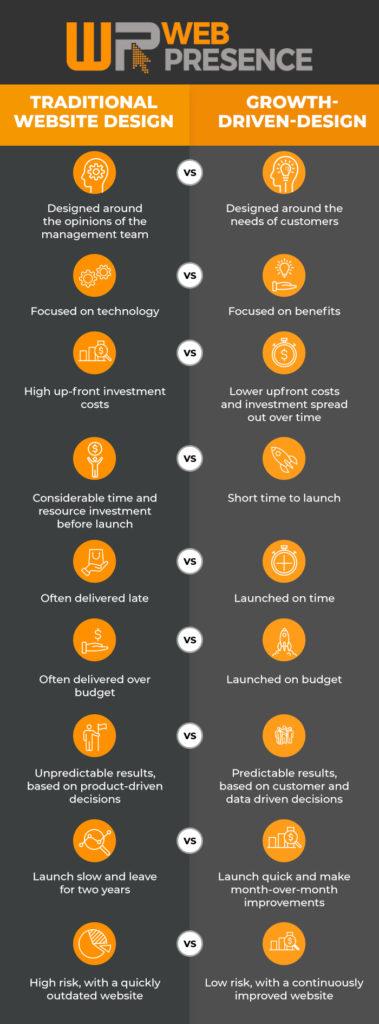There’s no doubt that choosing the right Content Management System (CMS) for your B2B business can be far from easy. With hundreds of options available from a wide range of vendors, sometimes it’s hard to know where to begin.
Should you go for open source CMS? Take the proprietary route? Or explore Software-as-a-Service (SaaS)? And when you’re operating within a medium-sized business or large enterprise, the choices become even trickier.
Chances are, you’ll need advanced features and functionality that you can modify and tailor to suit your business. But you’re also going to want to access those customisation possibilities as easily as possible.
Your choice of a B2B digital marketing CMS has a lot riding on it. And when your brand is on the line, you can’t afford to have an inflexible framework, system resource bottlenecks or a fragmented user experience.
You need a CMS that keeps pace with your ambitions and drives business growth. It’s a big decision. And one that will impact your business, either positively or negatively, for years to come.
That’s why we’ve put together this quick guide to help B2B marketers choose the right CMS for their digital marketing requirements. If you want to improve your company’s online capabilities, connect with your customers on a deeper level and build sustainable foundations for the future, then here are some of the things you need to consider.
Don’t begin by looking for a CMS solution
Before you begin your CMS search, make sure you know what you want to achieve online. And for that, you need to know your customers. Understand your audiences’ goals. Ask yourself what they need from your business. Consider what you can do to deliver a better solution than your competition.
Your buyer personas are a great place to start. Go back through the detail and reconnect with what compels customers to move through your sales funnel. Explore your content marketing strategy and how it dovetails into your website. Now look at what you’re currently missing and why that might matter to your buyers.
This initial customer focus is a vital piece of the jigsaw, but it’s often overlooked. Only when you know your customers’ goals, can you begin to build your own set of desired outcomes and shape your key performance indicators (KPIs).
Focus on your future needs
Scalability is a huge factor for any company that’s going places. Change is inevitable, and you’re going to need a system that will be able to flex with your B2B business. If your website stagnates, then so will your revenues.
Begin by looking to your five-year business plan for insights into your future direction. Can your CMS host thousands of pages, if necessary, without impacting performance? What about coping with fluctuations and spikes in visitor traffic? Also consider how the principles of Growth-Driven Design can be introduced into your CMS of choice.
Growth-Driven Design, or GDD, is a departure from traditional web design. It accelerates your time to market by up to 50%, as well as reducing up-front costs and spreading your investment over a longer timeframe.
If you’re not familiar with GDD, take a look at some of the benefits in the below graphic and make sure you select a CMS that can handle the long-term ride. It’ll be more than worth your while.

Build a CMS shortlist and get some outside help
Every CMS vendor is trying to deliver their own vision of the ultimate customer engagement platform. Their aim is to help you maximise your inbound marketing efforts and promote your business to your target audiences.
But every CMS has its own strengths, weaknesses and unique processes. In reality, there is no perfect one-size-fits-all CMS and no solution to suit all possible situations.
That’s why it’s never a bad idea to enlist the help of an expert to help you navigate through the process. But you can begin by narrowing down the field yourself. Consider using an unbiased third-party tool like Gartner’s Magic Quadrant.
The Magic Quadrant compares CMS vendors, allowing you to make your decisions based on the ability of each company to execute its plans and the quality of its vision. It’s a great starting point for researching potential suppliers. You can quickly and correctly identify a shortlist of potential solutions for your business.
Take a look at the Gartner Peer Insights platform too, which allows products to be reviewed and rigorously vetted. There’s no vendor bias and there are no hidden agendas.
But you can only get so far on you own. Whether your shortlist contains CMS Hub from Hubspot, Adobe Commerce (previously known as Magento), Drupal, Sitecore, Kentico or BigCommerce, look for an expert who can help you design a strategic implementation process, as well as help you find the right tools.
Great metrics are essential, not optional
Understanding the behaviours of your visitors, and the reasons behind their decisions, could mean the difference between limping along at break even and smashing your stretch target.
Building traffic, generating leads and maximising revenues begins with your marketing metric measurement and visitor tracking. For your inbound marketing to attract, convert, close and delight, your CMS needs to be up to the task.
And although most CMS systems may seem to deliver similar solutions, that’s not the case. Particularly when it comes to tracking, A/B testing, dashboards, KPI reporting and measurement. The granularity and quality of the business information you can extract from the system should be as much a priority as the user experience (UX).
Because if you can’t make clear UX decisions based on strong data, you can’t make the right improvements that resonate with your audiences.
Your CMS doesn’t have to handle everything
Your CMS shouldn’t be working in isolation. You need to make sure that the system you choose can integrate with your wider software stack. And that means your CMS shouldn’t have to manage multiple tasks.
It doesn’t need to replace your Customer Relationship Management (CRM) System, or make your marketing automation platform obsolete. But it does need to be able to communicate with them.
Integrating the right specialist systems together into one powerful suite means that you’ll be serving your customers more effectively and you’ll be getting full visibility of all sales and marketing opportunities.
Watch your budget and watch out for hidden costs
Your CMS investment is going to make a big impact on your business. You’ve started by exploring your buyer personas, understanding your audiences’ goals and connecting those with the needs of the business.
That means you already know what features you need to implement. And you can assess the likely costs associated with each of your shortlisted systems. But don’t overlook the long-term development costs of a cheap solution. Buy the right B2B digital marketing CMS that is going to get you up and running fast, and also maximise your long-term gains.
It’s easy to believe that you have the resources to deploy a CMS in-house, or have your IT department take on some development work to make an open source CMS fit your needs. This is rarely a good idea. Bespoke code, custom builds and making do with a cheaper system can leave you exposed to a bad user experience and prone to failure.
You also don’t want your speed of build to be dictated by the capacity of your IT department.
On the other hand, there’s no point in buying off-the-shelf extended functionality that you’re never going to use. It’s a balancing act that demands your full attention, and a little outside help.
Make the right CMS choice, for now and for the future
As we’ve already said, there is no perfect CMS solution to suit all possible situations. You need to discover what’s right for your B2B business. And don’t forget that choosing and implementing a CMS is just the beginning.
Once the system is in place, that’s the start of another journey. Use Growth-Driven Design to get the most from your investment and make sure you are delivering a continuously-optimised online experience for your audiences. It’s as much about the long term as it is the initial selection and deployment.



